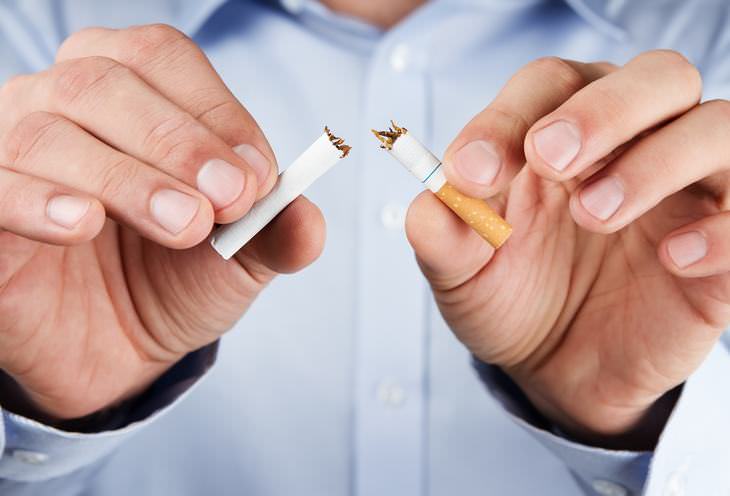

1. Set a date and be prepared for the difficulties
In one study, researchers compared the abrupt quitting of cigarettes with a slow reduction of smoking and didn't find either of them to be more effective than the other. Meaning that you can choose your method based on what you think will work best for you. However, be prepared to face difficulties in both cases. Medical News Today suggests that you let people know that you quit smoking. In addition, throw away all your cigarettes and decide which method you will follow.

Do you know a smoker that doesn't enjoy their coffee and alcohol with a few cigarettes? The NSW Government advises that one of the best ways to cut back on cigarettes is to cut back on your coffee and alcohol intake. This should reap results as caffeine can increase the level of anxiety and make you feel restless, both of which are triggers of nicotine withdrawal symptoms. Meanwhile, alcohol relaxes your brain muscles and can make you forget all the reasons that made you want to quit smoking in the first place.
3. Try behavioral therapy (individually or in a group)
In one study it was found that smokers can't quit smoking due to nicotine dependence and psychological distress since they treat smoking as a tension reliever. It has been proven that combing NRT with non-nicotine medication and behavioral support increases the chances of long-term smoking cessation by 25%. Behavioral support can come in the form of therapy in a group or individually, either by phone, email, or face-to-face. There are also various Nicotine Anonymous groups that you can attend.

5. Go for a walk or start any other activity when you feel like smoking
According to the Centre for Addiction and Mental Health, people who smoke have reduced energy and less of a desire to exercise due to their decreased pulmonary function. Therefore, cutting back on smoking will gradually increase the need for exercise and will decrease the desire to smoke, while also reducing cravings and withdrawal symptoms. Furthermore, according to a study published in 2007, physical activity can also help with depression, stress, irregular sleep patterns and cognitive functioning, most of which are usual symptoms of smoking cessation.

The American Dietetic Association states that smokers gain approximately 4-10 lb after they quit. This happens because they feel the need to snack on something since they are unable to smoke. The association, therefore, advises carrying a healthy snack or some gum on you at all times. This will keep your mouth 'occupied' and your cravings in check. Opt for snacks like almonds or fruit, and eat a small portion when you feel like smoking. You can also drink a sugar-free beverage or a cup of tea instead.
7. Avoid being around smokers and try to stay busy
The American Cancer Organization advises that you don't stay with people and in places that you associate with smoking as this might trigger a relapse. You should let people know that you have quit smoking and best would be to meet them at places where you don't associate the habit of smoking. Another great idea would be to take up new hobbies which will create new and healthier habits in non-smoking environments. These places will be safe and will give you the power you need to face your temptations.